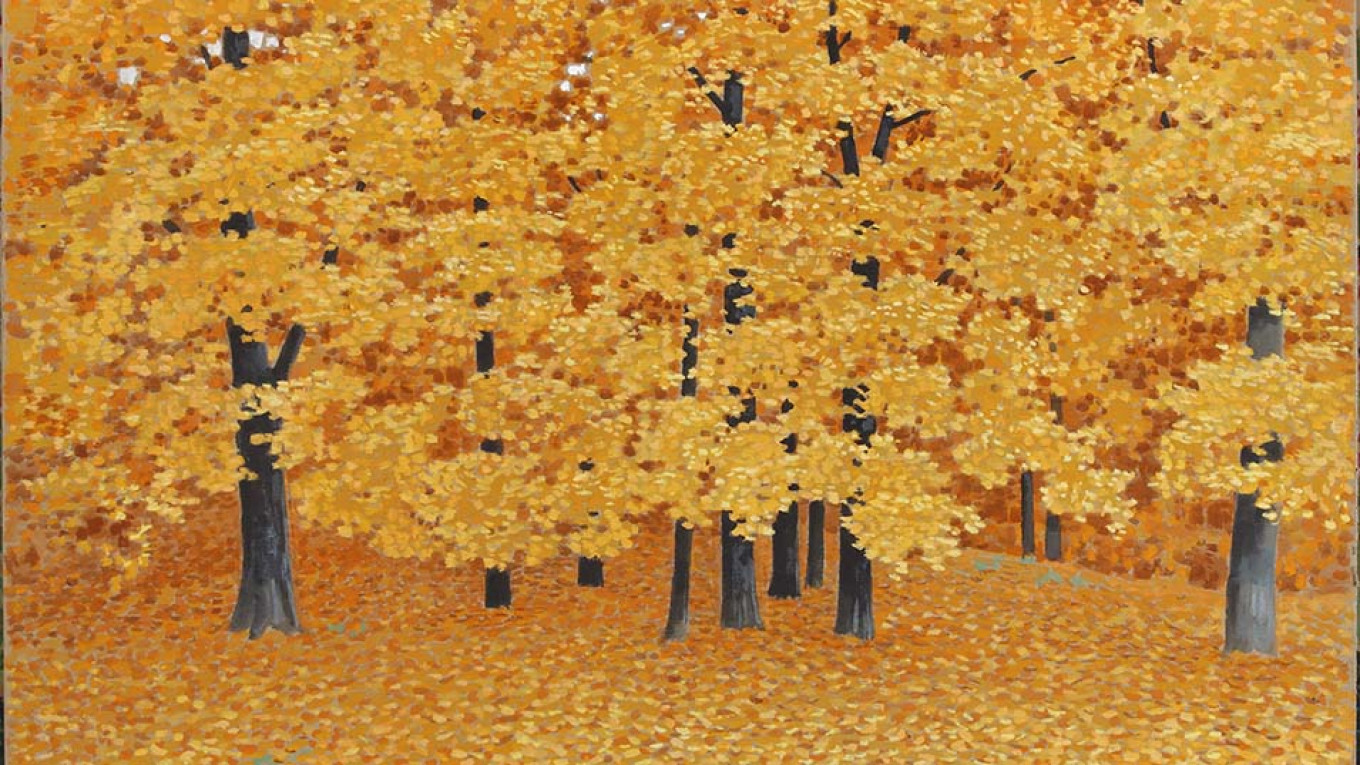The Mamontov Gallery has just opened a show of works by Vladimir Serebrovsky (1937-2016), an artist known for his set decorations, easel painting, theater posters, and book graphics in the style of the Silver Age. He is perhaps best known for his work at the Moscow Art Theater, where he worked for 30 years.
Silver Age
The Mamontov Gallery specializes in Russian works of the 20th century, including many from the Silver Age. This period in Russian culture is usually dated to 1898, when Sergei Diaghilev and Alexander Benois produced the first edition of “The World of Art,” a journal dedicated to ending the age of realism in art and ushering in more expressive and impressionistic art. Art of the Silver Age is hard to define, but is generally characterized by aestheticism, mysticism, decadence, and sensualism, often with romanticized elements of Eastern artistic traditions.
Although the Silver Age came to an end as movement in Russia by the 1930s, the spirit of the age has been kept alive by many artists, included Serebrovsky, who was influenced by such original Silver Age artists as Alexander Golovin, Ivan Bilibin, Mstislav Dobuzhinsky, and Benois. The gallery holds more than 70 paintings of the artist that were painted from 1970 to 2015.
Eastern influences
The main theme in Serebrovsky's painting was the East. The artist moved to Tajikistan in the 1970s and traveled through Nepal, India and Japan. He came back to Moscow almost 20 years later. “He was,” Lyubov Kristi, director of the gallery told The Moscow Times, “a child of two cultures.”
Mountains held a special place in Serebrovsky’s world, much like his great predecessor Nicholas Roerich. Serebrovsky wrote that “It is difficult to paint mountains after Roerich. It means entering into some kind of covert inner rivalry with the recognized master of the Silver Age. We are used to the bright colors and dramatic collisions that the artist saw in the Himalayas. The mountains on Roerich's canvases are full of tension. They exude anxiety, sometimes aggression. They are often the battlefield of Good and Evil, the clash of Light and Darkness.”
Serebrovsky’s mountain landscapes are different. They are lighter in palette and convey a mood of serenity, peace and harmony.
When Vladimir Serebrovsky moved back to Russia, he brought bright Asian colors to the Russian landscape. The artist found special charm in the beauty of Russian nature: chamomile and bay willow fields, ponds, forest paths, peonies and lilac bushes. You can see this in his paintings “Summer. Vladimir region” (2009); “Kuzminki” (2005); “Neskuchny Sad” (2004); and his series of the Andreyevsky Monastery (1995).

But he remained deeply connected to Eastern art, especially the art of Japan. You can see this in his autumn series —golden foliage, orange-red maples done when he returned to Moscow, which are a kind of reply to the works of Kaiya Higashiyama, a painter of the 20th century whom Serebrovsky greatly admired. Another “reply” was Serebrovsky’s series of paintings called “100 Views of Pamir,” done in response to Kazusiki Hokusai’s famous “36 Views of Mount Fuji.”
The exhibition will run until January 31, 2019.
Mamontov Gallery. 11 Lavrushinsky Pereulok. Metro Tretyakovskaya. (499) 270 1971
A Message from The Moscow Times:
Dear readers,
We are facing unprecedented challenges. Russia's Prosecutor General's Office has designated The Moscow Times as an "undesirable" organization, criminalizing our work and putting our staff at risk of prosecution. This follows our earlier unjust labeling as a "foreign agent."
These actions are direct attempts to silence independent journalism in Russia. The authorities claim our work "discredits the decisions of the Russian leadership." We see things differently: we strive to provide accurate, unbiased reporting on Russia.
We, the journalists of The Moscow Times, refuse to be silenced. But to continue our work, we need your help.
Your support, no matter how small, makes a world of difference. If you can, please support us monthly starting from just $2. It's quick to set up, and every contribution makes a significant impact.
By supporting The Moscow Times, you're defending open, independent journalism in the face of repression. Thank you for standing with us.
Remind me later.






